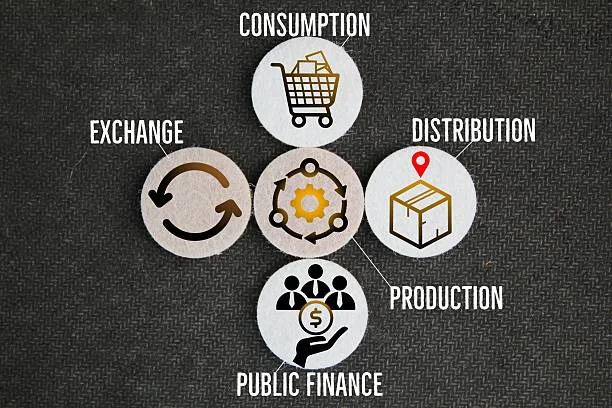TECHNOLOGY
Understanding Solar Technology in 2024

Solar panels are in demand in the U.S. as energy bills climb, and with good reason. Twenty-five percent of homeowners plan to install solar panels within the next five years. Technology advances quickly, and keeping up with it is essential if you want the best solar installation.
Following the changes in solar technology in 2024 can help you determine what you want from your solar power system. Solar technology is becoming more accessible, and the industry is experiencing substantial innovation. You can use these technologies to save money and help the environment.
Researching your options is the first step toward sustainable energy for your household to enjoy. Continue reading this guide to learn about solar tech and what to expect in 2024!
Solar Technology in 2024 Trends
Solar technology is in high demand, creating an incentive for solar companies to develop new or improved products. Options like double-sided or more efficient panels can help you save money by increasing energy production.
Learning about your options will help you work with a reputable solar installer. They can guide you toward each feature you want from your solar installation. It’s a step toward an efficient system that will meet your family’s needs for decades.
Here’s a closer look at some top trends before you harness solar energy.
1. Increased Efficiency
Efficiency is the name of the game with solar panels, and it grows as the technology enhances. Manufacturers are exploring new materials and designs to harness more energy from the sun with less space.
Efficient solar panels make extracting energy from the sun and converting it into Alternating Current electricity easier. When you purchase solar panels with increased efficiency, you’ll get a better return on your investment.
2. Bifacial Solar Panels
Another exciting option for solar panel technology in 2024 is the bifacial solar panel. These panels are becoming more popular due to their ability to capture sunlight from both sides of the panel. When you add these panels to your existing system, you’ll notice a substantial uptick in energy production.
Integrating new panels is challenging, and working with your solar provider to ensure a safe process is best. Here are some tips for integrating additional panels into your system.
3. Building-Integrated Photovoltaics
Building-integrated photovoltaics (BIPV) is one of the most impressive improvements in solar technology. This technology can be used for commercial or residential purposes.
The process integrates your windows and roofing into solar energy collection. These regions experience extended periods of sunlight. They can add more energy to your solar batteries or allow for passive income through net metering.
The technology enhances homes’ curb appeal for homeowners who do not want several solar panels on the roof. It makes adding solar installations more feasible in urban areas.
4. Solar Storage Solutions
The traditional solar panel installation is connected to the local electric grid. Your home’s surplus energy is sold to the electric companies in your area. A new trend in the solar industry is storage solutions.
Options like storage batteries can provide you with backup energy if the electrical grid goes down. It’s an excellent option if you want peace of mind for your family. Your storage batteries are invaluable if you’re worried about severe weather and ice taking down power lines.
5. Smart Solar Systems
Smart solar systems are among the most impressive pieces of solar technology in 2024. These systems use artificial intelligence to adjust the panels, aiming to capture more sunlight and increase the amount of energy harvested.
Use mobile apps on your personal devices to monitor the energy your system is collecting. You’ll ensure your investment is reaching peak efficiency. Pair your increased energy collection with the 2024 Solar Tax Credit to maximize your return on investment.
Benefits of Solar Power
Solar power provides several impressive benefits for your household and the environment. When you choose to install solar panels for your residential needs, you’ll discover significant advantages.
It’s an effective way to lower your carbon footprint and reduce pollution while enjoying your accustomed lifestyle. It’s also a cost-effective way to access electricity without paying a fortune.
Here’s a deeper dive into the benefits you’ll enjoy with your solar installation.
Lower Monthly Bills
One of the first benefits that stands out to many homeowners is lower monthly bills. Energy bills are a substantial cost, but you can eliminate them by working with a reputable solar company to access the best solar technology in 2024.
Solar panels will allow you to enjoy locked-in energy costs for the next few decades. Understanding what you owe will help you create and manage a budget.
Increased Property Value
Many aspiring homeowners want to reduce their carbon footprint, and finding a home with an existing solar installation feels like winning the lottery. Installing solar panels will increase your house’s curb appeal and property value.
The increase in property value is often enough to offset the cost of installing your new panels. Your solar panels will be seen as upgrades on a level with remodeled kitchens and bathrooms.
Cleaner Air
Homes dependent on energy from the grid can cause air pollution due to the fossil fuels necessary to create electricity. Traditional electrical plants burn fuel sources like coal and natural gas, releasing carbon emissions into the air.
You’ll reduce dependence by installing a solar energy system. Your system will harness electricity from the sun without creating pollution, helping your household enjoy green living.
Reliability
Solar panels provide unrivaled reliability when the power grid goes down. A generator can help you, but it relies on gasoline to provide the necessary power. Your solar installation will continue collecting and converting energy as long as the sun shines.
Harness the Power of Solar Technology in 2024
Solar technology is the way of the future for homeowners seeking sustainable energy for household needs. Solar technology in 2024 is advancing toward bifacial solar panels using new and more efficient materials.
Smart solar installations are helping you optimize your system for maximum energy collection. Storage solutions are also gaining prominence for peace of mind during outages.
Technology improves people’s lives, and solar technology is always moving forward. Check out our News content to keep up with the latest industry updates today!
Want to learn more? Visit our website for more like this.
TECHNOLOGY
Your Access, Upgraded: The Professional Benefits of RM1.to

In today’s fast-paced digital economy, professionals are constantly seeking tools that streamline workflow, increase efficiency, and maintain security. One platform that has been gaining attention in the online workforce community is rm1.to. Designed to provide secure and efficient access to specialized digital services, rm1.to is redefining how professionals work, collaborate, and manage tasks in a digital-first environment.
Simplified Access for Professional Tasks
One of the standout benefits of RM1.to is its focus on streamlined access. For many professionals, managing multiple digital tools, accounts, and permissions can be a time-consuming and error-prone process. RM1.to addresses this by offering a centralized platform where users can quickly access the services they need.
Whether it’s specialized data work, content creation, or technical support, RM1.to ensures that professionals can connect with verified service providers efficiently. By eliminating the usual friction associated with task assignment, approval, and payment, users can focus on productivity rather than administrative hurdles.
Enhanced Security for Peace of Mind
Security is a top priority in any professional setting, and RM1.to integrates it as a core feature. Traditional methods of managing access and digital collaboration can leave sensitive information exposed to risk. RM1.to mitigates this with built-in protections for both clients and service providers.
For professionals, this means confidence in every interaction. Payments are securely handled, services are verified, and access is monitored to prevent unauthorized use. The platform’s focus on transparency and accountability ensures that tasks are delivered reliably, reducing disputes and creating a trustworthy environment for all users.
Efficiency That Supports Growth
Another major benefit of RM1.to is its ability to support fast, efficient workflows. In the modern digital workforce, speed is often as critical as accuracy. RM1.to allows professionals to delegate micro-tasks quickly without worrying about complex onboarding or verification processes.
By combining rapid access with secure, verified transactions, the platform allows individuals and teams to scale their operations efficiently. Professionals can take on more projects, meet deadlines faster, and maintain high-quality standards—all without compromising security or accountability.
Flexibility for Diverse Professional Needs
The versatility of RM1.to is another reason it appeals to professionals. The platform is not limited to a single industry or type of task. From creative projects and technical support to data analysis and research, RM1.to can accommodate a wide range of professional requirements.
This flexibility enables professionals to adapt to evolving workloads, delegate tasks efficiently, and access specialized expertise on-demand. The platform acts as a bridge, connecting users with services that would otherwise require time-intensive searches or additional hires.
Building Trust Through Transparency
Trust is essential in any professional relationship, particularly in digital environments where users may never meet in person. RM1.to fosters trust through clear service descriptions, structured workflows, and feedback mechanisms. Both clients and service providers can review performance and maintain accountability, which strengthens collaboration and minimizes misunderstandings.
For professionals, this transparency not only ensures reliability but also allows them to make informed decisions when choosing services or partners. The platform’s structure encourages ethical practices and responsible usage, creating a professional ecosystem built on trust.
Conclusion
RM1.to offers a combination of security, efficiency, and flexibility that makes it a valuable tool for today’s digital professionals. By simplifying access, ensuring secure transactions, supporting scalable workflows, and fostering trust, the platform enables users to focus on what truly matters: delivering high-quality work and achieving professional goals.
In a world where digital tasks are growing in complexity and volume, RM1.to represents a meaningful upgrade in how professionals manage their work. Its features provide the support, speed, and reliability needed to thrive in a competitive digital workforce, making it a go-to platform for those seeking secure and efficient access to specialized services.
TECHNOLOGY
The Power of Curation: Ultimateshop’s Quality-First CC Strategy

In the digital world, access to information is only valuable when it is accurate, relevant, and well-organized. For platforms dealing with credit card (CC) data, this principle is even more critical. Raw data dumps may contain enormous amounts of information, but without proper curation, their utility ultimateshop is limited and their reliability questionable. ultshop.mobi has distinguished itself by adopting a quality-first strategy, using careful curation to transform large datasets into actionable, trustworthy resources quality-first CC.
The Limitations of Raw Data
Many platforms prioritize volume over precision, offering massive collections of CC information that are often outdated, duplicated, or poorly formatted. While this approach may appeal to users seeking large datasets, it comes with significant drawbacks. Errors, inconsistencies, and irrelevant entries increase the risk of flawed analysis or inefficient workflows. For developers, researchers, and testers, these issues mean extra time spent cleaning and verifying data, reducing productivity and increasing the potential for mistakes.
Ultimateshop recognized that the key to meaningful value is not simply the quantity of data but the quality. By prioritizing accuracy, organization, and usability, the platform provides users with curated datasets that are ready for immediate, reliable use quality-first CC.
Curation as a Core Strategy
At the heart of Ultimateshop’s approach is curation—a deliberate process of selecting, verifying, and refining data to ensure it meets strict quality standards. Every CC entry is evaluated for validity, accuracy, and relevance before inclusion. Duplicates are removed, formatting is standardized, and outdated or invalid entries are filtered out.
This rigorous curation process ensures that users receive datasets they can trust. Rather than sorting through thousands of questionable entries, users can focus on applying the information to research, testing, or legitimate project work. The curated approach turns potentially chaotic datasets into structured, usable resources.
Enhancing Usability Through Organization
Quality-first curation goes beyond validation—it also emphasizes organization and accessibility. Ultimateshop structures data in a way that is intuitive and user-friendly. Categories, tags, and consistent formatting make it easy to navigate even large datasets quality-first CC.
This thoughtful organization saves users significant time and reduces the risk of errors. For tasks that require precision and speed, such as testing payment systems or analyzing trends, the ability to access well-structured, reliable data is invaluable. Ultimateshop’s curated lists are not only accurate—they are actionable.
Trust and Reliability as Key Differentiators
In an industry where credibility is crucial, Ultimateshop’s quality-first strategy establishes trust. Users can rely on the platform to deliver accurate, up-to-date information without the frustration of sifting through unreliable entries. By emphasizing curation, Ultimateshop ensures that its datasets are consistently dependable, setting it apart from competitors that focus solely on volume.
Furthermore, this commitment to quality supports ethical and secure usage. Curated, verified data minimizes the risk of errors that could lead to misuse or security vulnerabilities, aligning the platform with responsible digital practices quality-first CC.
Continuous Improvement and Adaptation
Ultimateshop’s strategy is not static. The platform continuously updates and refines its curated datasets, incorporating new information while removing outdated entries. This dynamic approach ensures that users always have access to relevant, accurate data, allowing the platform to adapt to evolving needs and maintain its high standards over time.
Conclusion
Ultimateshop demonstrates the transformative power of curation in the CC data space. By prioritizing quality over quantity, verifying entries, organizing information effectively, and maintaining ongoing refinement, the platform provides reliable, actionable datasets that enhance efficiency and trust.
TECHNOLOGY
The Hidden Pathways of Vclubshop’s Digital Marketplace

In today’s interconnected world, the digital underground has become a sophisticated ecosystem where stolen data, illegal services, and cybercrime tools are exchanged. Among the platforms that have emerged in this shadowy landscape is vclubshop, a marketplace known for facilitating the trade of compromised data and other illicit digital goods vclub shop. Understanding how such marketplaces operate can help individuals and organizations strengthen their cybersecurity posture and respond effectively to emerging threats.
1. Exploring the Structure of Vclubshop
Vclubshop functions similarly to a legitimate e-commerce platform, but with an illicit purpose. Its structure includes several key elements:
Product Listings – Stolen data, including login credentials, payment information, and personal identity records, is organized for sale.
Seller Ratings and Reviews – Like legal marketplaces, buyers assess sellers based on feedback and reputation, which fosters trust in an otherwise anonymous environment.
Secure Transactions – Cryptocurrencies are typically used to maintain anonymity and reduce the traceability of purchases.
Anonymity Tools – Users often rely on VPNs, encryption, and other privacy measures to avoid detection by authorities.
By mimicking the structure of legitimate marketplaces, platforms like Vclubshop create a sense of order that allows illicit transactions to occur efficiently.
2. The Lifecycle of Data in the Marketplace
Stolen data rarely remains isolated; it passes through multiple stages before reaching end-users:
Acquisition – Hackers obtain data through breaches, phishing, malware, or social engineering.
Verification and Packaging – Data is often checked for validity and organized into packages for sale.
Marketplace Listing – The verified data is uploaded to platforms like Vclubshop.
Purchase and Exploitation – Buyers use the data for identity theft, financial fraud, or account takeovers, or resell it in other underground markets.
This pipeline shows how a single breach can have far-reaching consequences in the digital ecosystem.
3. Why Vclubshop Persists
Several factors contribute to the resilience of underground marketplaces:
High Demand – Stolen data fuels identity theft, fraud, and cyberattacks, creating a continuous market.
- Global and Decentralized Operations – Transactions cross borders, making enforcement and prosecution challenging.
Advanced Anonymity Measures – Cryptocurrency payments and encrypted communication systems protect both buyers and sellers.
These conditions create a marketplace that is difficult to disrupt and continuously adapts to law enforcement efforts.
4. The Risks to Individuals and Organizations
Even if someone is not directly interacting with platforms like Vclubshop, stolen information can impact them indirectly:
Account Compromise – Credentials sold on such marketplaces can be used to take over online accounts.
Financial Fraud – Payment information can be exploited for unauthorized transactions.
Identity Theft – Personal data can be used to create fraudulent documents or access services.
Awareness of these risks is the first step toward prevention.
5. Strategies for Protection
Protecting yourself and your organization from the effects of marketplaces like Vclubshop requires proactive measures:
Use unique, strong passwords for all accounts.
Enable multi-factor authentication wherever possible.
Monitor financial statements and credit reports regularly.
Keep software and devices updated to patch security vulnerabilities.
Educate users and employees about phishing and social engineering attacks.
For organizations, regular cybersecurity audits, network monitoring, and incident response planning are essential to minimizing exposure.
6. Understanding the Digital Underground
While platforms like Vclubshop operate outside the law, analyzing their structure and operations helps demystify the digital underground. By understanding the hidden pathways through which stolen data travels, individuals and businesses can take informed steps to secure sensitive information. Cybersecurity today is not optional—it is a critical part of navigating an increasingly digital world.

 LIFESTYLE9 months ago
LIFESTYLE9 months agoThe Disciplinary Wives Club: Spanking for Love, Not Punishment

 ENTERTAINMENT1 month ago
ENTERTAINMENT1 month agoExploring the Kristen Archives: A Treasure Trove of Erotica and More

 BUSINESS9 months ago
BUSINESS9 months agoBrand Visibility with Imprint Now and Custom Poly Mailers

 HEALTH8 months ago
HEALTH8 months agoHappy Hippo Kratom Reviews: Read Before You Buy!

 GENERAL5 months ago
GENERAL5 months ago5 Factors That Affect Tattoo Removal Success

 HOME IMPROVEMENT9 months ago
HOME IMPROVEMENT9 months agoThe Do’s and Don’ts of Renting Rubbish Bins for Your Next Renovation

 TECHNOLOGY9 months ago
TECHNOLOGY9 months agoBlog Arcy Art: Where Architecture Meets Art

 BUSINESS10 months ago
BUSINESS10 months agoExploring the Benefits of Commercial Printing












